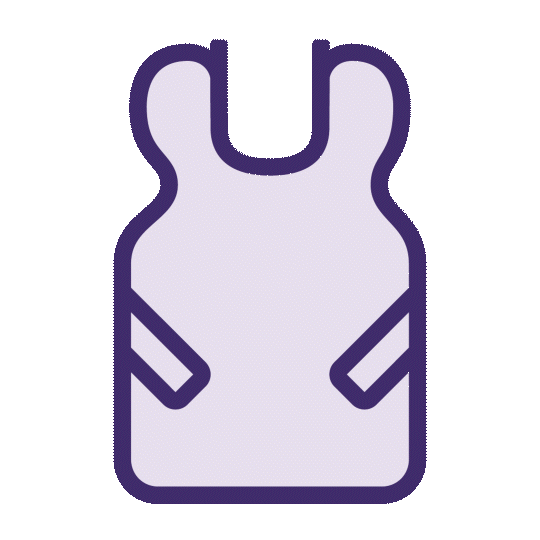Cleaning & Sanitization
When 84% of lead garments carry Staph a and Ringworm, gain peace of mind with a service contract from RCS
Wipes Clean What You Can See.
We Clean What You Can’t.
Most facilities depend on wipes and sprays to clean X-ray aprons. But here’s the issue: Those methods don’t eliminate biofilm or harmful pathogens.
Why Lead Garments Need Deep Cleaning
Lead garments aren’t only scientifically proven to host harmful pathogens, they are also often sweaty & smelly from being worn during 8-hour operations or splattered with blood.
As a high-touch object, lead garments should be deep cleaned quarterly just like door handles, light switches, and keyboards.
Compliance Made Easy
RCS’s cleaning process is endorsed by garment manufacturing companies and yields best practice outcomes as defined by AORN, TJC, and CDC.
We Go Beyond Wipes & Sprays
Wipes and sprays alone are not enough to properly remove contaminants on the X-ray garments.
Our co-founders contracted Ringworm from thyroid collars being cleaned on a wipes-based protocol.
Forgoing the deep cleaning process and using only wipes and sprays will lead to a build-up of biofilm and other bacteria, and could corrode the quality of your lead aprons over time.
Our Process
-
When your lead garments enter our facility, we evaluate them for needed repairs (worn Velco, torn straps, broken buckles, etc.) and identify areas that may need extra attention during the cleaning process.
We also evaluate surface contamination levels using an ATP swap testing system.
-
We perform our proprietary, multi-step, servicing process which is broken into two stages, cleaning and sanitization. The two stages is recommended by regulatory bodies such as the CDC.
-
We confirm the results of our cleaning & sanitization process with an additional ATP test.
Once the garments pass our ATP test, we update their status in our RADCOMPLY™ inventory management software portal for customers. You’ll always be prepared for an audit.
AORN Study on Garment Cleaning Regularity
Surveying 173 healthcare workers, predominantly registered nurses in surgical settings, the study found that:
78.0% reported wearing soiled protective gear
30.1% noted thyroid shield odors.
48.0% admitted to never spot cleaning
21.4% of aprons or shields never underwent standard department cleaning
The study identified potential risks of bacterial contamination, emphasizing the need for evidence-based guidelines and the need of a best practice solution.
Study on Lead Apron Cleanliness
Dr. Jaber from Wayne State conducted clinical studies revealing that X-ray aprons can harbor various microorganisms. In his research, Dr. Jaber cultured 25 lead aprons. The study found:
84% were colonized with Tinea species (Ringworm)
84% were colonized with Staphylococcus aureus
12% were colonized with MRSA
What Makes RCS Different
RCS has been leading the industry in X-ray garment compliance for over a decade.
Our processes go beyond wipes & sprays to ensure your garments are safe for patients and staff.
The Joint Commission and other regulators recognize RCS as a best practice solution.
Ready for Clean X-ray Garments?
Fill out this form to get started!





